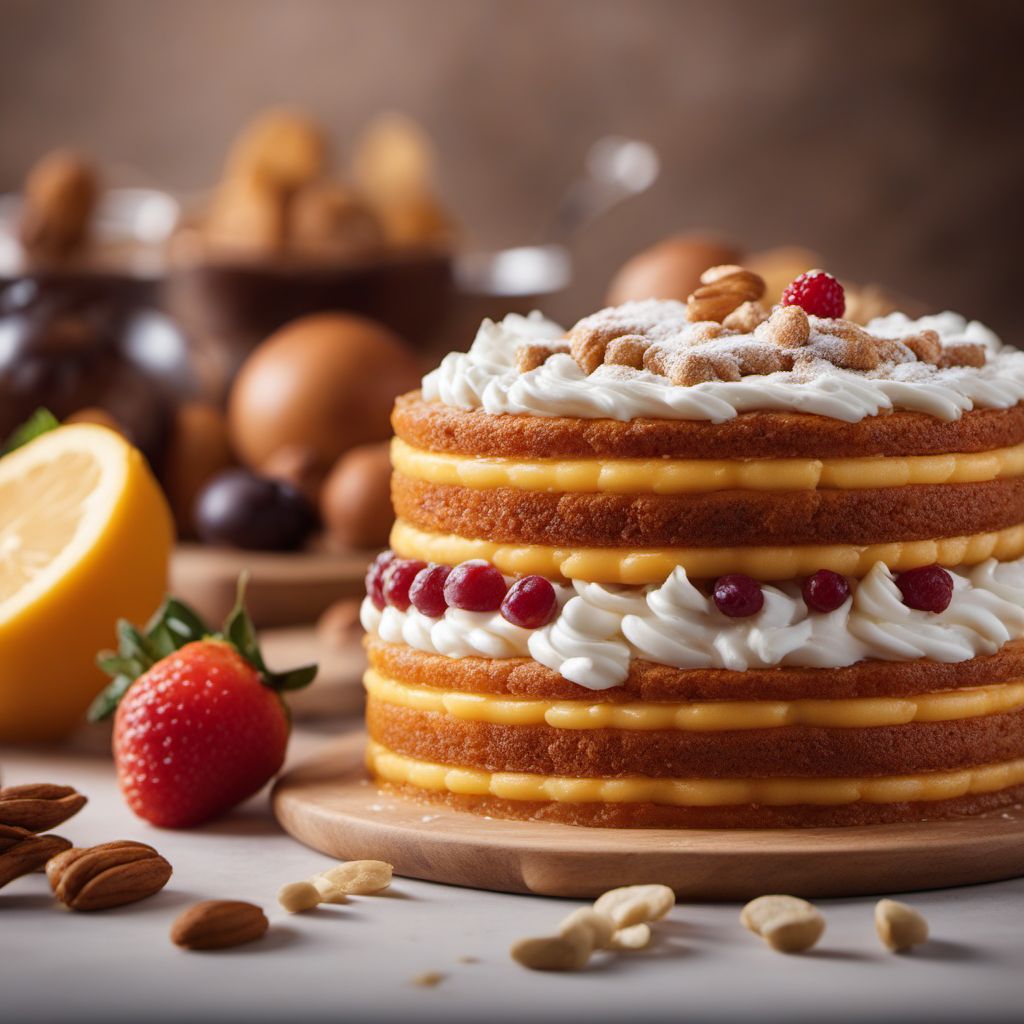
Ingredient
Rotation cooked layered cakes
Whirling Delights: Exploring the Art of Rotation Cooked Layered Cakes
Rotation cooked layered cakes are made by pouring thin layers of batter onto a rotating turntable or a specialized rotating cake pan. As the batter is poured, the turntable or pan is rotated, allowing each layer to cook evenly and create a beautiful spiral pattern. The layers are typically thin and delicate, resulting in a light and airy texture. The cakes can be flavored with various ingredients such as chocolate, vanilla, or fruit extracts, and can be decorated with frosting, glazes, or fresh fruits. The final result is a visually stunning cake with a unique texture and flavor.
Origins and history
The technique of rotation cooking layered cakes originated in Eastern Europe, particularly in countries like Hungary and Romania. These cakes have a long history and are often associated with special occasions and celebrations. The traditional method involved using a special rotating spit over an open fire, where the layers of batter were poured and cooked. Over time, the technique evolved, and modern rotating cake pans and turntables were introduced to simplify the process. Today, rotation cooked layered cakes are enjoyed in various parts of the world and have become a popular dessert for weddings, birthdays, and other festive events.
Nutritional information
Rotation cooked layered cakes are typically high in carbohydrates and calories due to the use of flour, sugar, and butter. However, the exact nutritional content can vary depending on the specific recipe and ingredients used.
Allergens
Rotation cooked layered cakes may contain allergens such as wheat (gluten), eggs, and dairy (butter). It is important to check the recipe and ingredient labels for potential allergens before consuming.
How to select
When selecting rotation cooked layered cakes, it is important to consider the freshness and quality of the ingredients used. Look for cakes that have been recently baked and are free from any signs of spoilage or staleness. Additionally, pay attention to the appearance of the cake, ensuring that the layers are well-defined and evenly cooked.
Storage recommendations
To maintain the freshness and quality of rotation cooked layered cakes, store them in an airtight container at room temperature for up to 2-3 days. If the cake has been frosted or decorated, it is best to refrigerate it to prevent spoilage. However, keep in mind that refrigeration may affect the texture of the cake, making it slightly denser.
How to produce
Producing rotation cooked layered cakes requires specialized rotating cake pans or turntables. These can be purchased from specialty baking stores or online. Follow a trusted recipe that provides detailed instructions on how to pour and rotate the batter to achieve the desired layered effect.
Preparation tips
To prepare rotation cooked layered cakes, start by preparing the batter according to the recipe. Ensure that the batter is smooth and free from lumps. Preheat the rotating cake pan or turntable and lightly grease it to prevent sticking. Pour a thin layer of batter onto the pan and rotate it gently to spread the batter evenly. Repeat the process with each layer, allowing the previous layer to cook before adding the next. Once all the layers are cooked, carefully remove the cake from the pan or turntable and allow it to cool completely before decorating or serving. To achieve intricate patterns, consider using different colors or flavors for each layer.
Culinary uses
Rotation cooked layered cakes are a delightful dessert that can be enjoyed on their own or as a centerpiece for special occasions. They can be served as a standalone cake or paired with whipped cream, fruit compotes, or ice cream. The visually appealing layers make them a popular choice for celebrations and gatherings.
Availability
Rotation cooked layered cakes are commonly available in Eastern European countries such as Hungary, Romania, and Poland. They can also be found in specialty bakeries or international food stores in other parts of the world.


